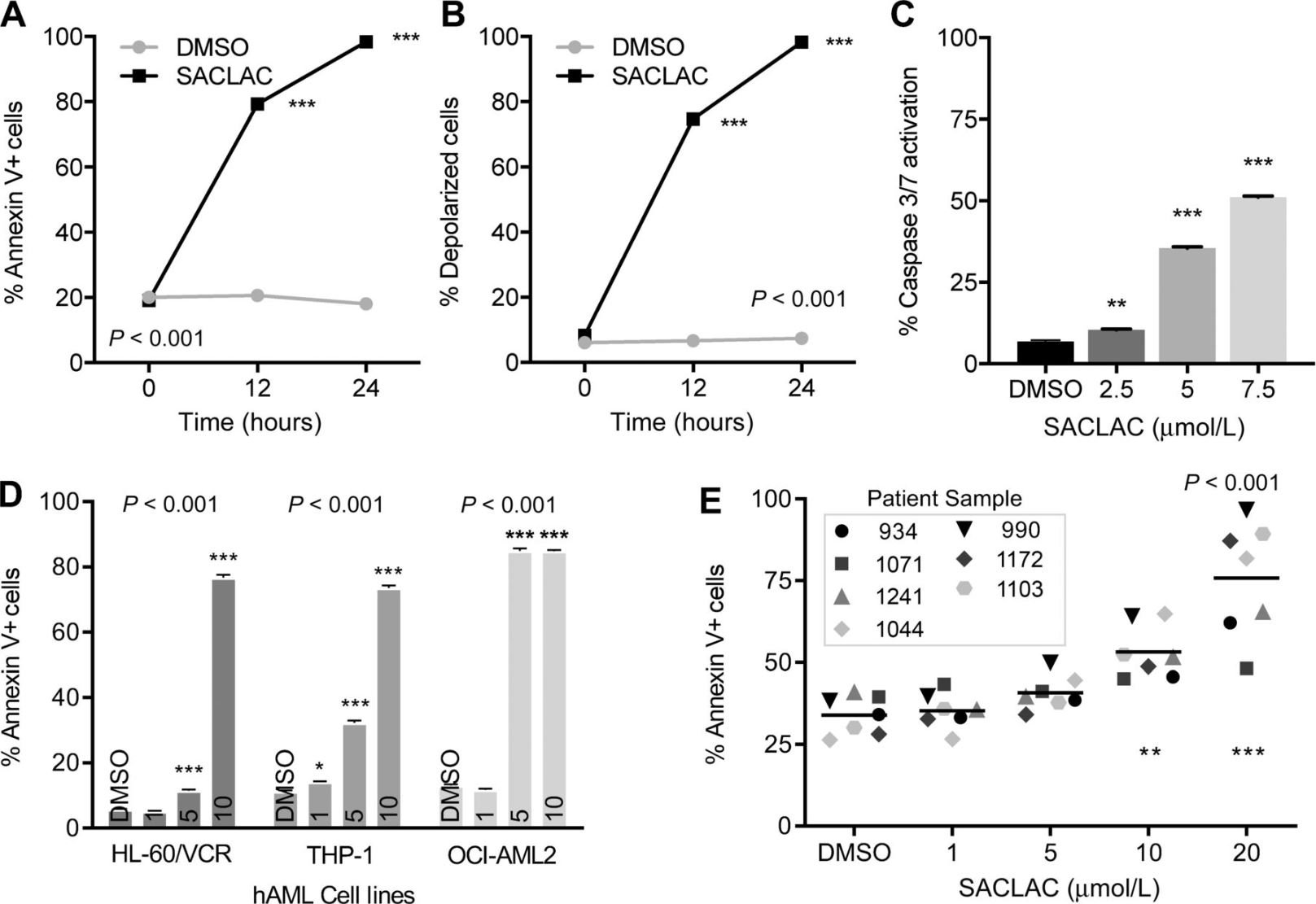Acute Myeloid Leukemia Overview
Acute myeloid leukemia (AML) is an aggressive malignancy of the bone marrow resulting from the uncontrolled proliferation of immature myeloid blasts. The median overall survival of patients with AML is poor. Younger patients (<60 years old) have improved survival rates compared to older patients (>60 years old) the latter of which constitute the majority of AML cases. Targeted therapies have recently been approved to supplement the previous standard-of-care treatment option consisting of intensive induction chemotherapy. Unfortunately, responses are poor and relapse rates remain high, which collectively necessitates the development of novel treatment strategies.
Kantarjian H et al., Blood Cancer J, 2021
Harnessing the Power of Sphingolipids to Treat AML
Once considered merely structural components, sphingolipids are now appreciated as important signaling molecules that control apoptosis, cell survival, proliferation, drug resistance, and leukemogenesis. Ceramides, a pro-apoptotic class of sphingolipids, sit at the center of sphingolipid metabolism. Ceramides are generated via the de novo synthesis pathway or the salvage pathway through acylation of free sphingosine by ceramide synthase enzymes. Importantly, cellular ceramide can be broken down by ceramidases or used to generate complex sphingolipids (glycosylated ceramides, sphingomyelin, etc).
Ung J et al., Blood Reviews, 2022
Dysregulated sphingolipid metabolism in AML promotes a leukemia-friendly state by decreasing ceramides. Our group aims to characterize the various dysregulated sphingolipid pathways in AML with the goal of targeting these pathways as novel therapeutic targets, augmenting current AML therapeutics, and overcoming drug resistance. We have previously shown that acid ceramidase (AC), a ceramide catabolizing lipid hydrolase, is upregulated in AML and is important for leukemic maintenance and drug resistance. Importantly, pharmacological and genetic inhibition of AC reduces proliferation, induces cell death, and overcomes drug resistance in AML cell lines. These results highlight the importance of AC for AML leukemic survival and provide rationale for the continued development of AC inhibitors and therapeutic strategies.
— Acid ceramidase is upregulated in AML —
— Inhibiting acid ceramidase reduces AML survival —
Tan et al., Oncotarget, 2016
Pearson et al., Mol Cancer Res, 2019
— Inhibiting acid ceramidase reduces multidrug resistance protein 1 (P-GP) —
Tan et al., J Lipid Res, 2019
Ongoing Projects
Developing and characterizing novel AC inhibitors
Characterizing the relationship between sphingolipids and common AML driver mutations
Assessing the efficacy of AC inhibition with current AML standard treatments
Related Funding
NIH/NCI P01 CA171983
“Targeting Sphingolipid Metabolism for Treatment of AML”
Project 2 “Targeting Acid Ceramidase in AML”
NIH/NCI F31 CA271809 (to Johnson Ung)
“Targeting Acid Ceramidase and Bcl-2 in Acute Myeloid Leukemia”





